The computer's case is divided into three sections. First there is the main room, the spacious center that contains the motherboard.
There is a space below for the PSU.
And there is a gap for routing cables between the mount for the motherboard and the back of the case.
I began disassembling by trying to take out the right fan.
I unplugged its power cable from the motherboard and then went to undo the zip tie that held it to other cables. I tried to properly unlock the zip tie, but after 30 minutes of frustration I just snipped it with scissors.1
Removal of the right fan requires removal of the front panel. But the screws holding in the front panel are over tigthened. When I try to unscrew them I start tearing the grooves in the screw. So I was unable to remove the front panel, and thus left the fan in its spot. I went on to the other fan; I unplugged its power cable from the motherboard and unscrewed its 4 screws.
Next up, the RAM. I laid the computer on its side so that there was no chance of the sticks falling down as I popped them out.
After taking out the RAM I started to unplug everything from the mobo.
First, the main power supply cable.
Then the cables for the front panel lights.2
The front panel cables enter into the main room, exit through the top into the cable storage section, and then enter back again into the main room at a lower point closer to their destination on the motherboard.
Next I unplugged the CPU power supply. The cable entered the main room from the bottom and climbed upwards through a gap in the space between the GPU and the motherboard. The GPU does a good job tucking in the CPU's power cable. I will need to remember to plug in the CPU power cable before installing the GPU, because you cannot pass the head of the cable through the gap between the GPU and the motherboard.
Next I unplugged the cable3 that was connected to the mobo under the GPU.
Then I took out the GPU. There was one thumb screw that attached it to the back panel. After undoing the screw, I popped the GPU out of its slot just like RAM sticks.
The cable on the bottom left was for the audio jacks for the front panel.
Next I unscrewed the PSU. One screw was stuck like the screws in the front panel. But I had to get the PSU out. I used a flat head, and I pressed the screwdriver hard into the bar of the philip's cross with the least dammage. With a lot of normal force I was able to get it to turn. When I took the screw out, I learned that the difficulty came from it being the wrong screw.4
With all the motherboard's cables unpluggged and the PSU removed, I embarked on removing the mighty heat sink. This took some time. There was a lever I had to pull to release the pressure on the latches that hold the heat sink to the mounting bracket. Even once the pressure was released and the latches were unlocked, I had trouble unhooking them. There were various video guides online on how to remove the heat sink, but they all said "it's easy" and then skipped ahead without showing how they unhooked the latches. If you shake the heat sink aggressively you will stumble upon the way the latches unhook. But if you are trying to do the job cautiously, it is not immediately clear how to get them undone. The correct method is to push the latch on one side of the heat sink towards the heat sink so it pushes out the latch on the otherside. Then once you have one side unhooked you pull the heat sink in the other direction.
Next I cleaned off the thermal paste on the heat sink and the CPU. As mentioned in the logs, at first I did not have a solvent to properly remove the thermal paste. I bought 90% ethyl alcohol; I could not find the 99% isopropyl BingoBoingo recommended. I scrubbed and scrubbed forever with cotton swobs and coffee filters.
I cleaned the CPU while it was still locked into the motherboard. There is no better way to have that delicate part held firmly in place. If you spill a drop of solvent on the motherboard you can wait for it to evaporate, no problem. If you dammage a pin on the CPU, you're fucked.
The last step was to unscrew the motherboard. I felt a bit silly doing this. I had no other place to store the mobo, so I knew I was immediately was going to screw it back in. The process took a bit of time, because once again there were problems with some of the screws.
The reflected light on the CPU's pin array was beautiful.5
The stripped case.6
- I may have been able to get the zip tie if I had a bobby pin. I was using a screw driver head that was not tiny enough. [↩]
- I am not 100% certain of each of these little cable's function. I will have to investigate when I open my computer back up. [↩]
- This cable was for the USB slots on the front panel. [↩]
- Thank you supplier who shall no longer be named. [↩]
- The result of my camera work does not quite capture this. [↩]
- Except for that fan... [↩]
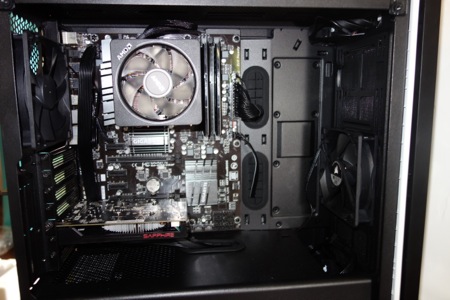
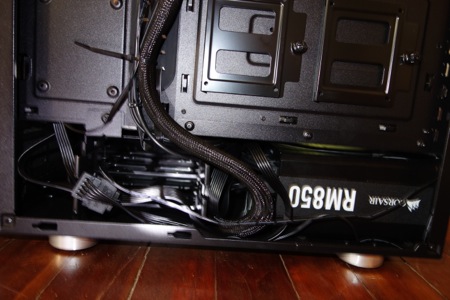
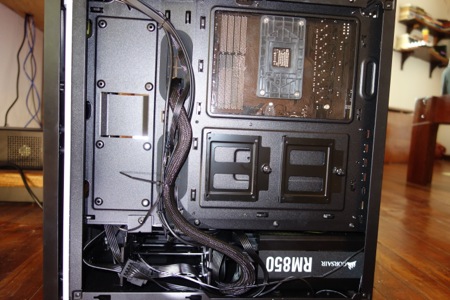
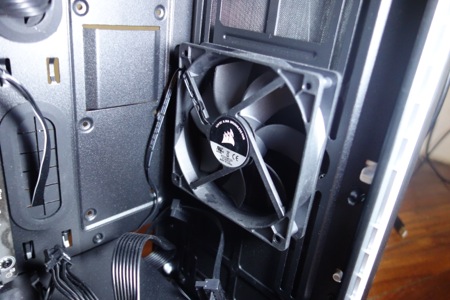
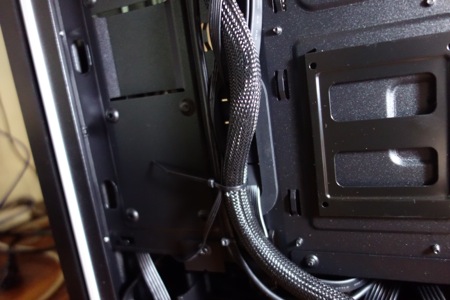
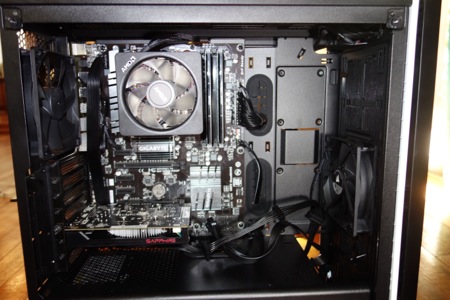
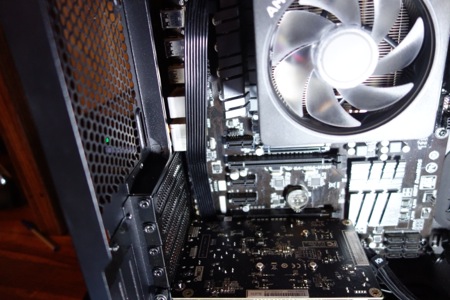
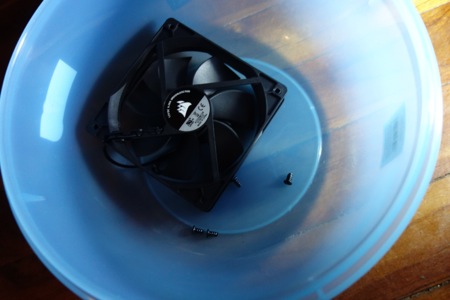
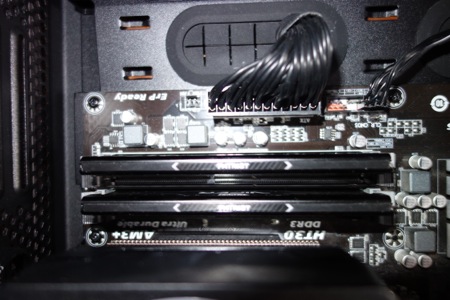
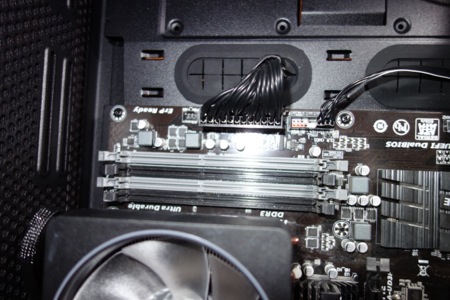
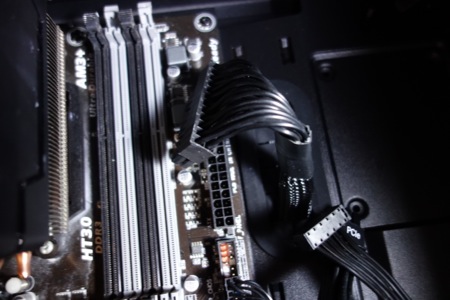
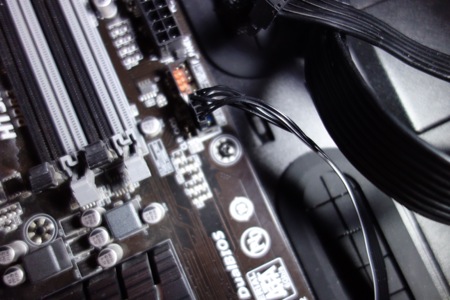
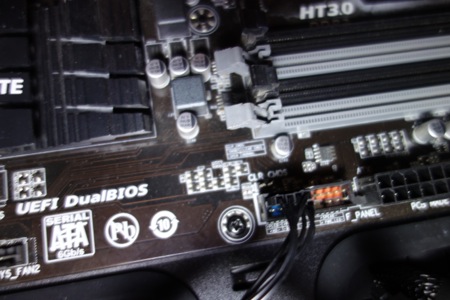
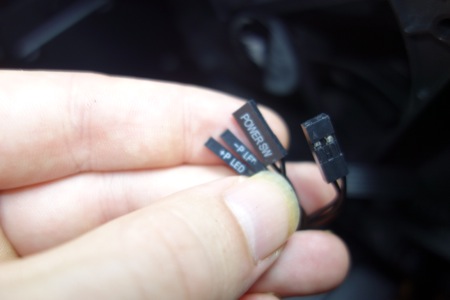
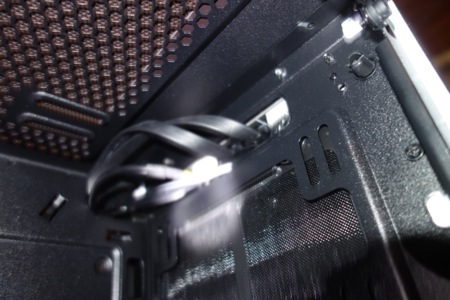
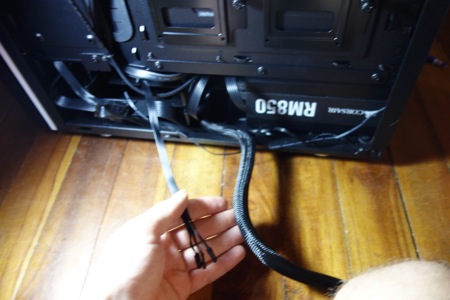
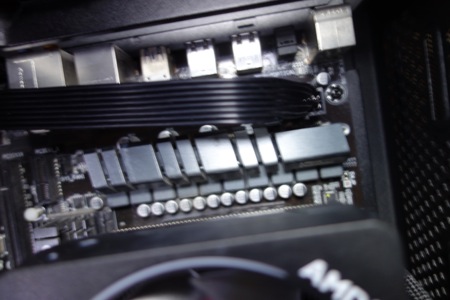
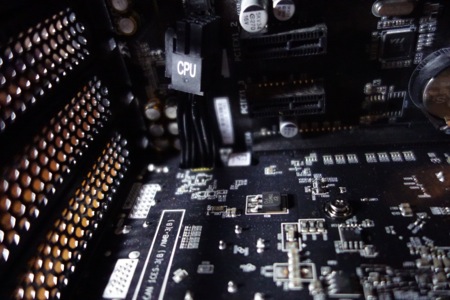
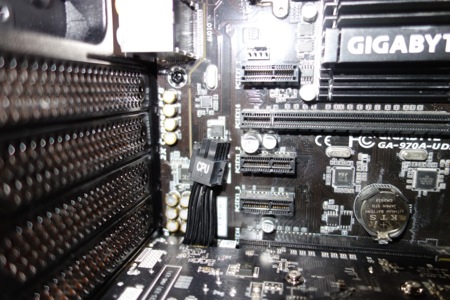
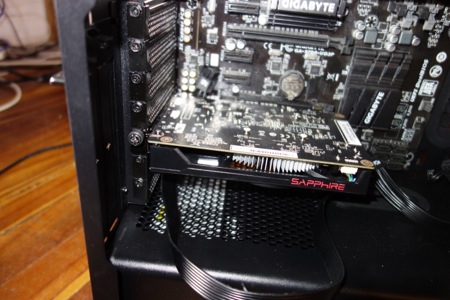
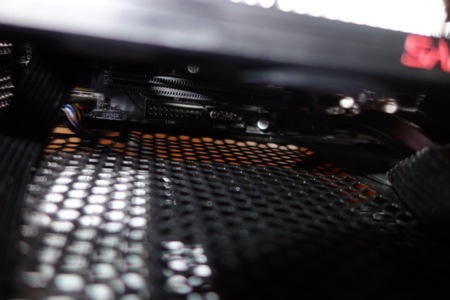
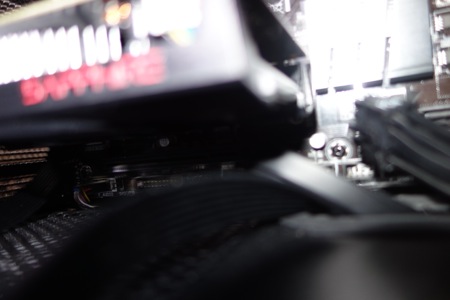
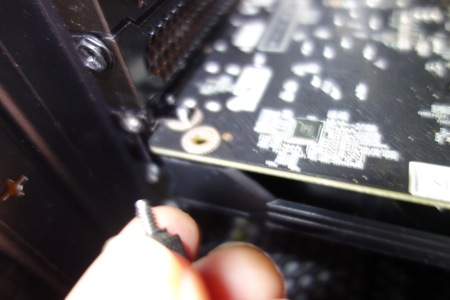
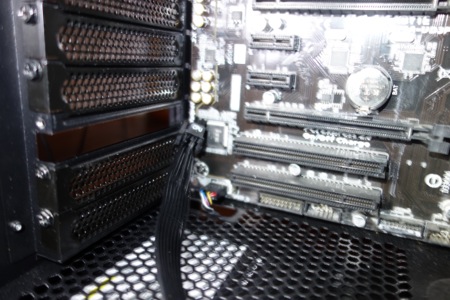
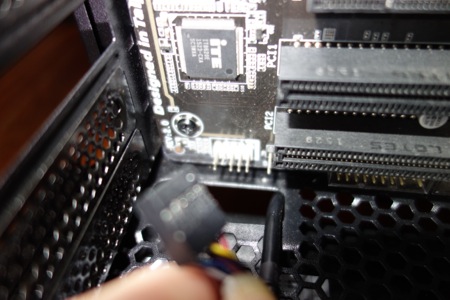
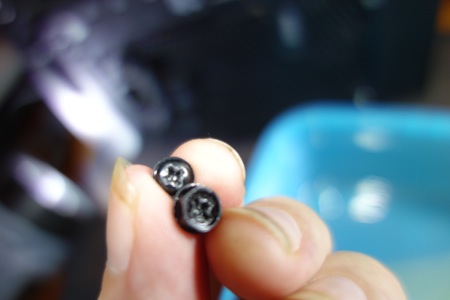
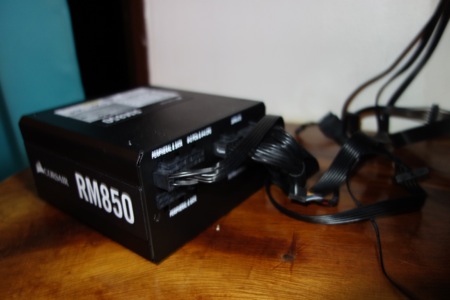
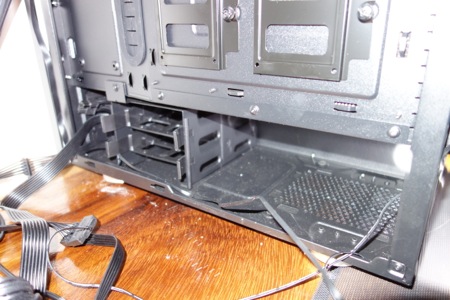
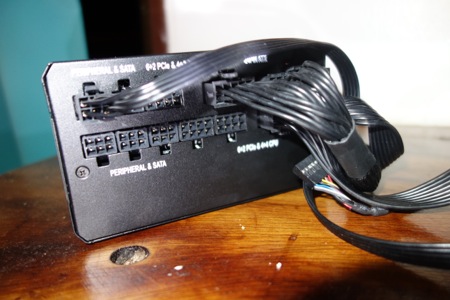
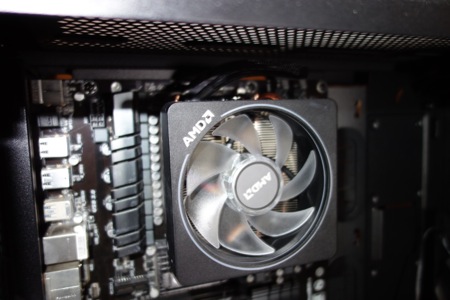
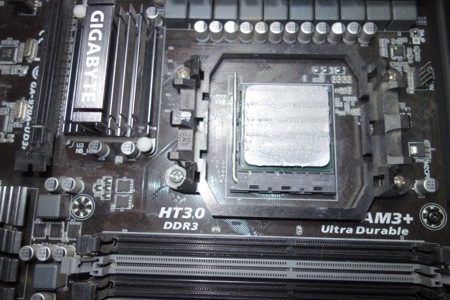
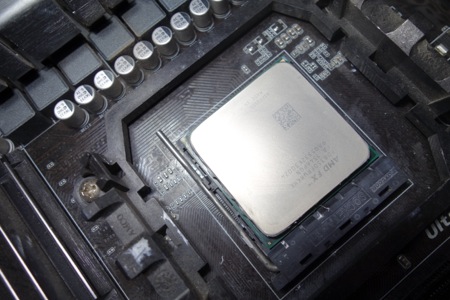
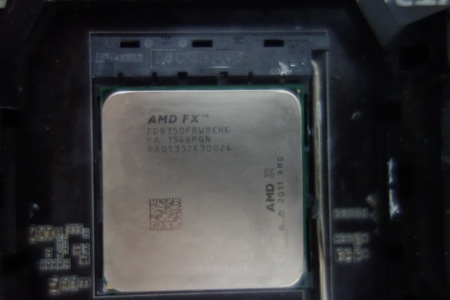
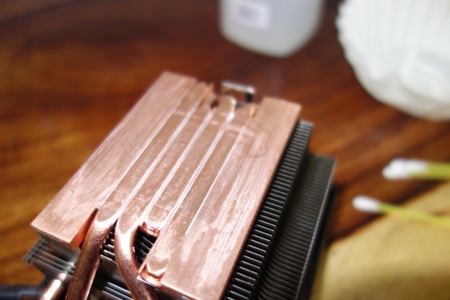
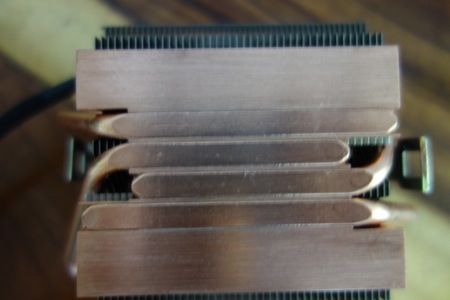
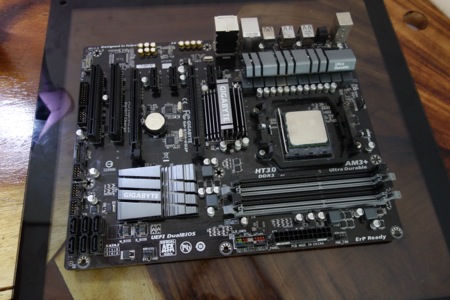
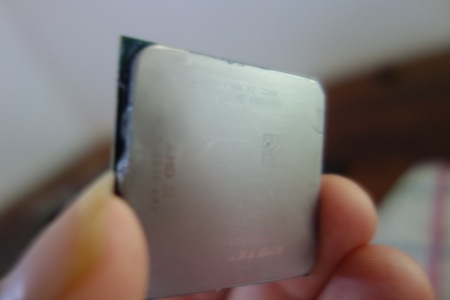
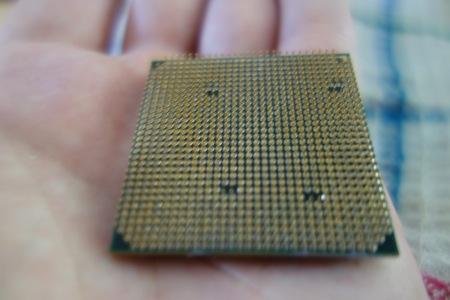
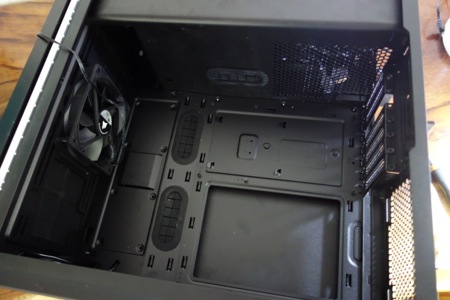
I've just always snipped the zip ties. Even in Uruguay, new ones can be had affordably by the hundreds.
Say, I don't see any mention of anchor screws between the case and the mobo. As a former board butcher, lemme ask you: were there anchor screws/didja put some in if not, before reassembly?
@BingoBoingo
Releasing the zip ties was me attempting to do things 'The Right Way' TM , it was not done to save $$ lol. I have bags of spare zip ties.
@hanbot
There was one standoff between the motherboard and the case. I never took it out; if you look closely you can see it in the last picture just a little right of the center. The standoff goes into a hole in the motherboard that looks like the other holes for screws. Should there be more than this one standoff I'm referring to? I noticed you used the plural "anchor screws" And am I correct in thinking anchor screws==standoffs?
Hard to see what's going on exactly in the pic, but anchor screws have both a male (which goes into the case) and female (which sits and waits for a proper screw between it and the motherboard) parts, and separate the board from the case's metal. I tend to use rather old cases; probably there's other ways of separating these, but I don't really see it in your picture.
The problem being that if you screw the board directly into the case, and tightly, you run the risk of shorting the board and/or fucking up the soldering on the facedown side.
@hanbot
Ah okay, I read about the problem of shorting the board from having it touch the case. This case (The Carbide Spec 06) has what I understand are built in anchor screws. The one where you can best see its elevation is on the right side of the case towards the middle.
I also made sure to not over tighten the screws nor put more torque than necessary on the motherboard as I screwed them in.